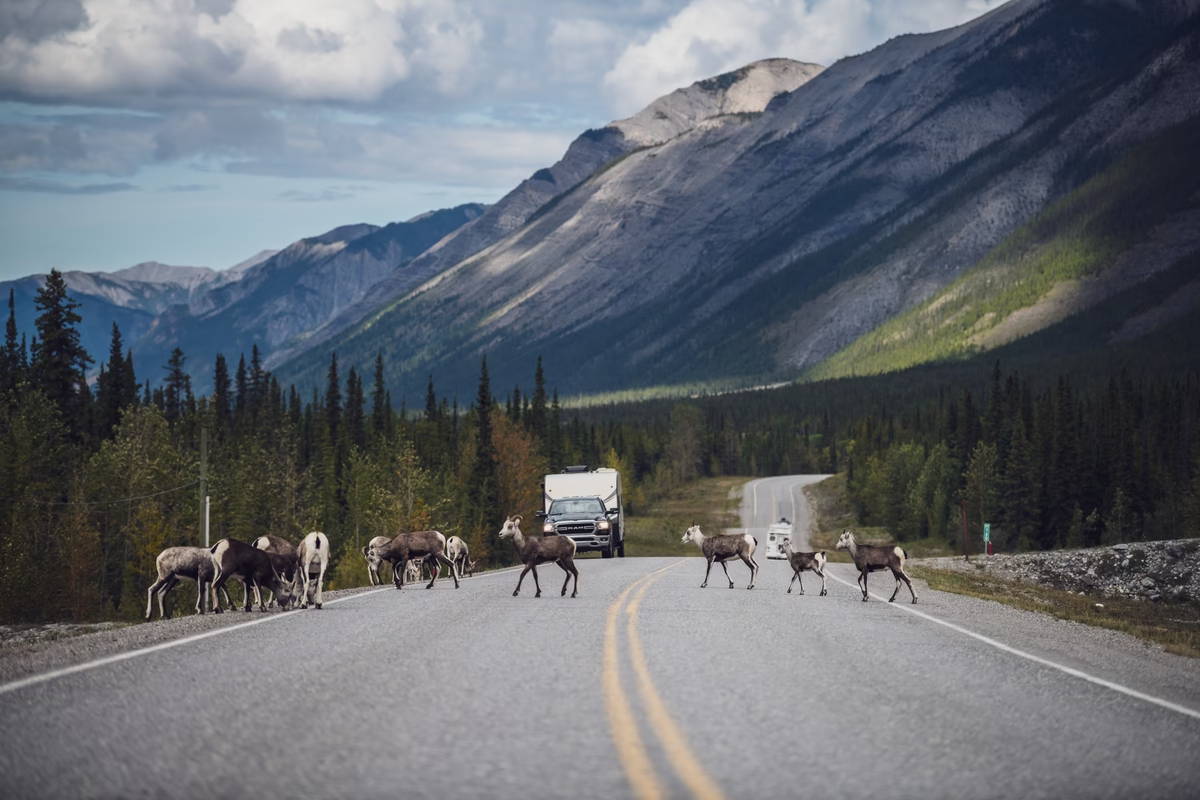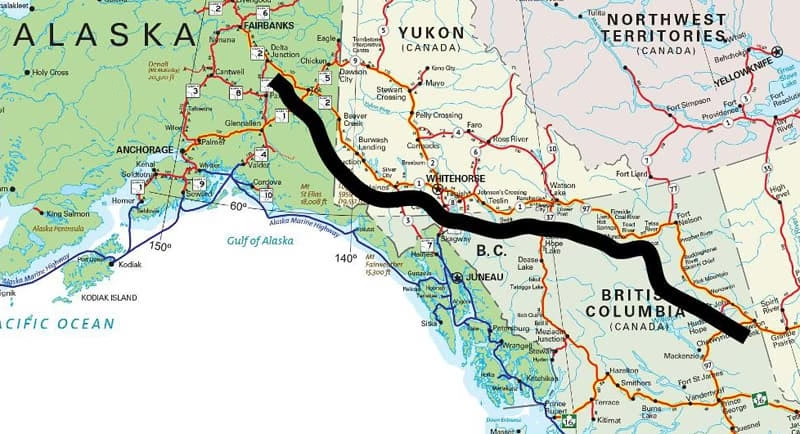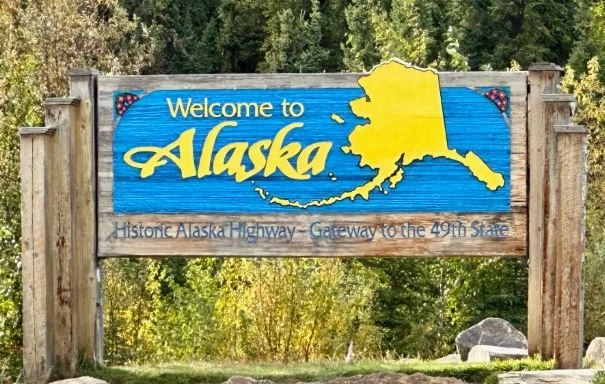- Can You Drive To Alaska: Alaska Highway
- Introduction
- Overview of Driving to Alaska
- The Alaska Highway: Your Main Route
- Starting Points: Where to Begin Your Journey
- Crossing the U.S.-Canada Border
- Important Travel Documents and Visas
- Vehicle Preparation for the Long Drive
- What to Know About Canadian Road Laws
- Fuel and Food Stops Along the Route
- Road Conditions and Seasonal Considerations
- Wildlife You Might Encounter on the Way
- Accommodation Options During the Trip
- Safety Tips for Driving Through Remote Areas
- Cell Service and Connectivity Challenges
- Weather Conditions to Prepare For
- Must-See Attractions and Scenic Spots
- Alternative Routes to Alaska
- Conclusion
- Introduction
Can You Drive To Alaska: Alaska Highway
Introduction
driving through Canada on your way to Alaska is an exciting and adventurous journey that many travelers dream of undertaking. Known as the “Last Frontier,” Alaska offers stunning landscapes, abundant wildlife, and unique cultural experiences. But can you actually drive there? The answer is yes — you can drive to Alaska by car, but it requires some planning and preparation. The trip involves crossing international borders, navigating long stretches of remote highways, and dealing with changing weather conditions.
Whether you’re a seasoned road tripper or planning your first big adventure, knowing what to expect will help make your trip smoother and more enjoyable. This guide will walk you through everything you need to know about driving from the U.S. to Alaska, including routes, permits, vehicle preparation, and tips to make your journey safe and memorable.
Overview of Driving to Alaska

drive to alaska involves traveling through Canada via the Alaska Highway, a scenic and historic route built during World War II. The journey covers thousands of miles, mostly through remote and wilderness areas, making it both a challenge and an opportunity to experience nature up close. Unlike flying, driving allows you to explore small towns, stop for local attractions, and take in breathtaking views at your own pace. However, the drive requires careful planning due to long distances between fuel stops, limited services in some areas, and the need for proper documentation to cross international borders. Understanding the route and its demands is the first step toward a successful Alaska road trip.
The Alaska Highway: Your Main Route
The drive to alaska Highway, also called the Alcan Highway, is the primary road connecting the continental U.S. to Alaska. Starting near Dawson Creek in British Columbia, Canada, it stretches about 1,390 miles to Delta Junction, Alaska. This highway was originally constructed in 1942 for military purposes and has since become a popular route for travelers. The road passes through stunning mountain ranges, dense forests, and several small communities. While most of the highway is paved today, some parts remain gravel, requiring cautious driving. Along the way, you’ll find limited gas stations and accommodations, so it’s important to plan your stops carefully. The highway is open year-round, but winter conditions can be harsh and challenging for drivers.
Starting Points: Where to Begin Your Journey
Most travelers start their drive to alaska road trip from the northwestern United States, with common departure cities including Seattle, Washington, and Anchorage, Alaska. Dawson Creek, British Columbia, is known as “Mile 0” of the Alaska Highway and is the official starting point of the route. Depending on where you begin, the total driving distance to Alaska can vary significantly. Planning your starting point based on your location, available time, and travel preferences will help you map the best route. Keep in mind that the journey involves crossing from the U.S. into Canada before continuing north, so starting closer to the border can save time and make border crossings easier to manage.
Crossing the U.S.-Canada Border
drive to alaska requires crossing the international border between the United States and Canada. Border crossings can sometimes take time, so it’s important to be prepared with all necessary documents. You’ll need a valid passport or other approved identification, and if you’re traveling with a vehicle, registration and proof of insurance are essential. Customs officers may ask about your travel plans, so be honest and clear. Also, be aware of restrictions on certain items like food, plants, and firearms. Checking border wait times ahead of time can help you avoid long delays and plan your journey efficiently.
Important Travel Documents and Visas
To drive from the U.S. to Alaska through Canada, you must have proper travel documents. A valid passport is the most common and accepted form of identification. Depending on your citizenship, you may also need a visa or an Electronic Travel Authorization (eTA) to enter Canada. Additionally, if you’re renting a car, check that the rental agreement allows travel into Canada and Alaska. Having vehicle registration and proof of insurance ready is crucial. Preparing all necessary documents before your trip helps ensure a smooth border crossing and avoids unexpected issues.
Vehicle Preparation for the Long Drive

Preparing your vehicle is key for a successful trip drive to alaska. Ensure your car is in excellent condition, including brakes, tires, and engine performance. Carry a spare tire, jack, and basic tools for minor repairs, as services can be limited on remote stretches. Stock up on emergency supplies such as extra fuel, water, food, and warm clothing. Consider investing in a GPS or detailed maps, and check if your phone has roaming coverage in Canada and Alaska. Proper vehicle preparation reduces risks and helps you stay safe throughout the long and sometimes challenging journey.
What to Know About Canadian Road Laws
When , it’s important to familiarize yourself with Canadian traffic laws. Speed limits are posted in kilometers per hour (km/h), so adjust your speed accordingly. Canada has strict rules regarding seat belts, cellphone use while driving, and impaired driving, with severe penalties for violations. Also, be aware of wildlife crossing signs and be prepared to slow down in those areas. Understanding these laws helps you avoid fines and ensures a safe and smooth trip through Canadian territory.
Fuel and Food Stops Along the Route
One of the biggest challenges when driving to Alaska is managing fuel and food stops. The Alaska Highway passes through vast, remote areas with limited services. Gas stations can be spaced over 100 miles apart in some sections, so it’s crucial to fill up whenever possible. Packing extra fuel in approved containers is a smart backup plan. Likewise, food options can be scarce, so carrying non-perishable snacks and meals is wise. Planning your stops ahead of time helps avoid running low on essentials and keeps your journey comfortable and worry-free.
Road Conditions and Seasonal Considerations
The condition of roads on the way to drive to alaska varies depending on the season and weather. Most of the Alaska Highway is paved, but some sections still have gravel or rough patches. Summer is the best time to drive, with milder weather and longer daylight hours. In contrast, winter brings snow, ice, and reduced visibility, making driving more hazardous and sometimes requiring specialized tires or chains. Spring and fall can also bring unpredictable weather. Checking road conditions regularly and preparing for changing weather will help ensure a safer trip.
Wildlife You Might Encounter on the Way
drive to alaska means sharing the road with abundant wildlife. It’s common to see animals such as moose, deer, bears, and caribou near the highway, especially in forested or rural areas. Wildlife crossings are frequent, and collisions can be dangerous. Drive cautiously, especially during dawn and dusk when animals are more active. Always obey posted signs warning of wildlife, and never approach or feed animals. Being alert and respectful of wildlife not only keeps you safe but also protects the natural environment.
Accommodation Options During the Trip
Accommodation options along the route to Alaska vary from rustic campsites to motels and lodges. In remote areas, campgrounds offer a budget-friendly way to rest, though amenities can be basic. Small towns along the highway often have motels and inns, but availability may be limited during peak travel season, so booking ahead is recommended. For those seeking more comfort, some lodges offer scenic stays with meals included. Planning your overnight stops in advance helps avoid surprises and ensures you have a comfortable place to rest after a long day of driving.
Safety Tips for Driving Through Remote Areas
Driving through the remote stretches on the way to Alaska requires extra caution. Cell phone coverage can be spotty or nonexistent, so always let someone know your travel plans and expected arrival times. Carry a well-stocked emergency kit with first aid supplies, blankets, and extra food and water. Drive carefully on narrow or winding roads, especially in poor weather. Avoid driving at night when visibility is low and wildlife is more active. Staying prepared and alert will help you navigate these isolated areas safely and confidently.
Cell Service and Connectivity Challenges
One major challenge on the road to drive to alaska is limited cell phone coverage. Large sections of the Alaska Highway run through wilderness where cell towers are sparse or nonexistent. This means you may lose service for hours or even days. It’s important to download offline maps and have a GPS device for navigation. Inform friends or family about your route and schedule. Consider carrying a satellite phone or emergency beacon if you’re traveling in very remote areas. Being aware of connectivity limitations helps you stay safe and prepared.
Weather Conditions to Prepare For
Weather conditions on the route to Alaska can change quickly and dramatically. During summer, you can expect mild temperatures and long daylight hours, but rain is common. In spring and fall, unpredictable weather includes fog, rain, and chilly temperatures. Winter driving is challenging due to snow, ice, and reduced daylight, and some roads may be temporarily closed. Always check weather forecasts before and during your trip, dress in layers, and pack emergency gear like warm blankets and traction aids. Being ready for any weather keeps your journey safe and enjoyable.
Must-See Attractions and Scenic Spots
The drive to Alaska offers incredible natural beauty and interesting stops along the way. Highlights include stunning mountain ranges, crystal-clear lakes, and dense forests. Popular spots include Muncho Lake in British Columbia, Liard River Hot Springs, and the Northern Lights viewing areas. Small towns like Whitehorse and Tok provide cultural experiences and rest opportunities. Taking time to explore these attractions enriches your road trip, turning the drive itself into an unforgettable adventure. Planning your stops to include scenic and cultural points makes the journey even more rewarding.
Alternative Routes to Alaska

While the Alaska Highway is the most popular route, there are alternative ways to drive to Alaska. One option is the Cassiar Highway (Highway 37), which offers a more scenic but less traveled path through British Columbia. It connects to the Alaska Highway near the Yukon border and can provide a quieter, more adventurous experience. Another option is the Top of the World Highway, which links Dawson City, Yukon, to Alaska’s border at Tok. These alternative routes require careful planning, as services and road conditions may vary. Choosing a different route can add variety and unique sights to your trip.
Conclusion
drive to alaska from the continental U.S. is an incredible journey filled with breathtaking landscapes and unique experiences. However, it requires preparation, patience, and respect for the remote wilderness and international borders. If you enjoy adventure, scenic drives, and the freedom of exploring at your own pace, this trip can be truly unforgettable. By understanding the route, preparing your vehicle, and packing essentials, you can tackle the challenges and enjoy the rewards of the open road. Whether for a summer road trip or a longer expedition, driving to Alaska is an adventure worth considering.
You Can Also Read: American Open University: Falling Behind in Online Education Rankings?
FAQS
Can you get to Alaska by car from the USA?
Yes, you can drive from the continental US to Alaska. The most common route is through Canada. Here’s how it generally works: Starting Point: Most travelers begin in the contiguous United States, often from states like Washington or Montana.
Is Alaska connected to the US by road?
The Alaska Highway was completed in 1943 by the U.S. Army Corps of Engineers as a military access road during the Pacific War. The Yukon and British Columbia sections were turned over to Canada six months after the end of the war and it was opened to civilian traffic in 1948.
Is it legal to drive to Alaska?
There are no border restrictions in place. Crossing the border between Canada and Alaska by road is usually simple although there are some requirements to be aware of. Wait times at border crossings are generally short or even non-existent.
Do you need a passport to drive to Alaska?
Traveling to Alaska by car
Luckily, the Alaska-Canada border crossing requirements are relaxed, so a passport might not be necessary.
Which country separates Alaska from us?
Canada
Alaska is the only non-contiguous U.S. state on continental North America; about 500 miles (800 km) of Canadian territory consisting of British Columbia (in Canada) separates Alaska from Washington.
How far is Alaska from Russia?
The narrowest distance between mainland Alaska and mainland Russia is approximately 55 miles (88 kilometers) at the Bering Strait. However, there are two islands, Little Diomede (part of Alaska) and Big Diomede (part of Russia), in the Bering Strait, which are even closer, being separated by about 2.5 miles.

[…] flight route taken. In this guide, we’ll break down the key information you need to know about the flight distance from the USA to India, the most common routes, estimated travel times, and what factors can influence your […]